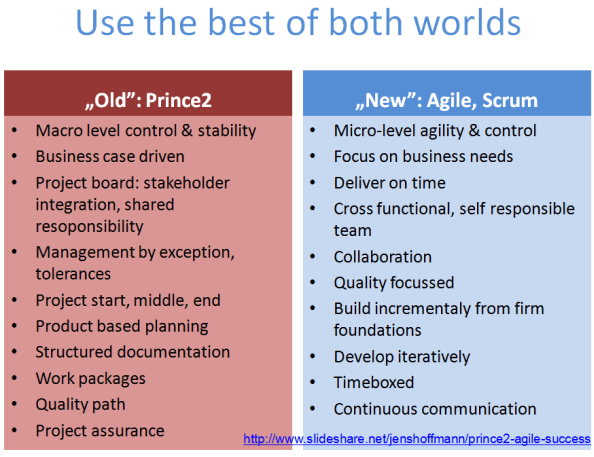They already managed ages ago! So why don’t we manage to realize something as simple as a web application? Ages ago people managed to fulfil miraculous projects with hardly any tools. Today we can choose from a wide range of tools, but still, we do not manage to run a project according to the client’s needs. What goes wrong?
Usage of basic project management rules will directly improve your project
Defining your project, dividing tasks and setting the time frame makes you continuously aware whether the project is going well and when a release can be expected. It enables you to answer questions of clients and management and if somebody interrupts you and will try to add some functionality at least you will be able to show the impact of this change on the deadline, budget, scope or quality of the project. Because whatever change is introduced, it always influences something. As we all know clients and managers will always try the opposite. In general, they expect that their projects should be delivered cheaper and quicker and the quality level should be the same. In my opinion, this is a mission impossible.
Choose the best of both worlds
To be honest that above is not new and far from “Web 2.0”. This is common sense that we also learned ages ago. A lot of this common sense is included in “best practices” like the Prince2 project management approach. But knowing Prince2 doesn’t mean that you are a good project manager. Managing projects is something you need to learn through practice. And while doing it you need to find out what best practices are the most applicable to your situation. For sure an approach like Prince2 can support today’s projects. The main disadvantage might be a rather static and control-focused approach. Therefore, I advise combining Prince2 with a more Agile approach, by combining the best of both worlds.
The business case within Prince2 is e.g. something I would really like everybody to use. On many occasions, people want to build or realize something without really knowing and understanding why. Recently, I have found out that a simple question: “How are you going to earn money with it?” very often couldn’t be answered. In such a case you have to think twice before you start the project.

Tooling has increased dramatically
The main difference between “old” and “new” way of managing projects is probably the number of tools available today to support you in managing your projects. Some years ago one of the main tools was Microsoft Project. Probably this is still a widely accepted standard, but today a lot more online services are available that support collaboration between the team and the client.
These tools make it possible for people to work in a completely different way than they did several years ago. Working remotely is a lot easier. Teams spread over the whole world manage to cooperate by means of these tools.
Relatively cheap or even freeways of communication like VoIP and Skype make that people can easily communicate with each other on a daily basis to make sure that everything is clear. All kind of web-based ticketing systems enables people to work on the right things and share all the essential information with the whole team. Integration servers build the new release enabling daily releases if needed. Information can be easily shared through e.g. blogs or Twitter accounts and documents can be shared through a central document sharing platform. In fact, you are able to work wherever you like.

Peter, I agree that a hybrid approach is the right one. Methodologies such as Prince do provide a good mechanism for making the business case for a project and for enforcing rigor and accountability at major milestones, but does not support the way many of today’s development teams work. You need the flexibility of an Agile approach at a granular level, but having a more formal project governance process provides the context for the deliverables and tasks that will be delivered using Agile techniques.
Pradeep thanks for your comment. Nice to see that you agree. In case of bigger projects Prince2 for sure provides you the sometimes needed control. On the other hand I really love the Agile approach which makes that this “control” effort is less needed. I think it mainly depends on the type of customer and the self-responsibility of the development team what approach is best.
I am curious what you and others think about this.
Peter, I agree that a hybrid approach is the right one. Methodologies such as Prince do provide a good mechanism for making the business case for a project and for enforcing rigor and accountability at major milestones, but does not support the way many of today’s development teams work. You need the flexibility of an Agile approach at a granular level, but having a more formal project governance process provides the context for the deliverables and tasks that will be delivered using Agile techniques.
Pradeep thanks for your comment. Nice to see that you agree. In case of bigger projects Prince2 for sure provides you the sometimes needed control. On the other hand I really love the Agile approach which makes that this “control” effort is less needed. I think it mainly depends on the type of customer and the self-responsibility of the development team what approach is best.
I am curious what you and others think about this.